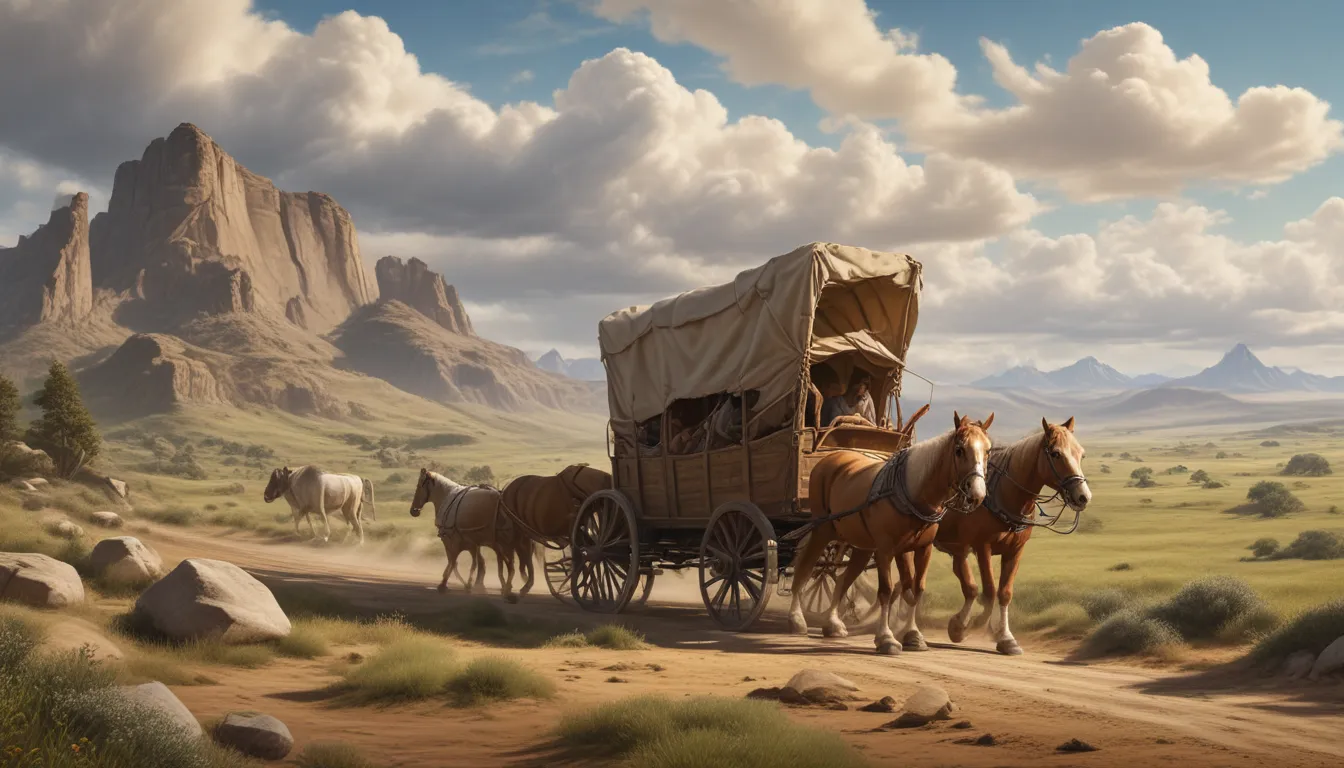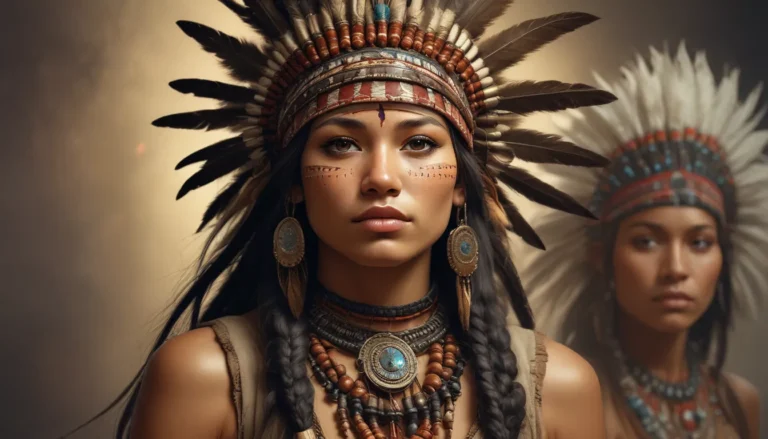The images in our articles may not match the content exactly. They are used to grab your attention, not to show the exact details in the text. The images complement the text but do not replace it.
Embark on a fascinating journey back in time as we unravel the mysteries and marvels of the Oregon Trail. Stretching over 2,000 miles, this iconic route was more than just a path; it was a gateway to dreams for countless 19th-century American settlers. Join us as we delve into the rich history of the Oregon Trail, from its origins to the unexpected challenges and unique solutions that pioneers faced. Buckle up, hitch your wagon, and let’s explore 17 captivating fun facts that bring this historic trail to life.
The Oregon Trail: A Gateway to the West
In the 19th century, the Oregon Trail served as a historic 2,170-mile route that facilitated the westward migration of American pioneers. Stretching from Independence, Missouri, to Oregon City, Oregon, this trail was a lifeline for those seeking new opportunities and fresh beginnings in the Pacific Northwest. It became one of the main pathways for the great westward movement, enabling thousands to settle in uncharted territories.
Discovering the Allure of the Oregon Trail
Why did people brave the treacherous journey along the Oregon Trail? Several factors motivated settlers to embark on this arduous expedition:
- Opportunity for Land Ownership: The promise of fertile land in the Oregon Territory enticed farmers and families looking to start anew.
- Economic Hardship: Economic difficulties in the eastern United States, including the Panic of 1837, drove people westward in search of better prospects.
- Manifest Destiny: The belief that American settlers were destined to expand across the continent fueled the westward expansion and the use of the Oregon Trail.
Confronting Adversity Along the Trail
Life on the Oregon Trail was fraught with challenges that tested the pioneers’ resilience and resourcefulness:
- Diseases: Cholera, dysentery, and typhoid fever were rampant and often fatal due to inadequate medical knowledge and sanitary conditions.
- Harsh Weather Conditions: From heavy rains to snowstorms and scorching heat, travelers had to endure extreme weather patterns.
- Geographical Obstacles: Natural barriers like the Rocky Mountains and the Snake River posed formidable challenges that demanded ingenuity and perseverance.
The Trials and Triumphs of Trail Life
Survival on the Oregon Trail required teamwork, determination, and adaptability:
- Daily Chores: Gathering firewood, cooking meals, repairing wagons, and caring for animals were essential tasks for survival.
- Wagon Trains: Traveling in groups provided safety and support, with experienced guides leading the way.
- Entertainment: Simple activities like singing, storytelling, and playing musical instruments boosted morale during the arduous journey.
The Legacy of the Oregon Trail
The impact of the Oregon Trail reverberates through history, shaping the growth and development of the American frontier:
- Population Growth: Settlers flocked to the Pacific Northwest, leading to the rapid expansion of towns and cities along the trail.
- Economic Development: Agriculture, trade, and industry flourished in the newly settled areas, contributing to the growth of the American economy.
- Cultural Exchange: Interactions between American settlers and Native American tribes, though not always peaceful, played a crucial role in shaping the westward expansion.
Embracing the Oregon Trail Today
While the pioneers have long faded into history, the legacy of the Oregon Trail lives on through modern-day initiatives:
- National Historic Trail Designation: Recognized in 1978, the Oregon Trail is preserved as a vital part of American history.
- Educational Resources: Museums, interpretive centers, and historical sites offer insights into the trail’s significance and the experiences of those who traversed it.
- Cultural Phenomenon: The Oregon Trail video game, reenactments, and preservation efforts keep the spirit of the trail alive for future generations.
- Preservation Efforts: Conservation groups and government agencies work together to ensure the trail and its landmarks are maintained for posterity.
Reflecting on the Oregon Trail
As we journeyed through the annals of the Oregon Trail, we uncovered captivating tales that illuminate this pivotal chapter in American history. From the sheer grit of the pioneers to the enduring impact on westward expansion and cultural exchange, each fact underscores the trail’s profound significance. Whether you’re a history enthusiast or simply curious about the past, the Oregon Trail’s stories of resilience, adventure, and discovery are sure to captivate your imagination.
Frequently Asked Questions: Exploring the Oregon Trail
Q: What exactly was the Oregon Trail?
A: The Oregon Trail was a historic 2,170-mile route that led thousands of settlers from Missouri to Oregon in the 19th century, symbolizing a path to new beginnings and adventure.
Q: How long did it take to travel the Oregon Trail?
A: On average, the journey took about four to six months, with travelers pacing themselves to avoid exhausting their resources.
Q: Were there any dangers along the Oregon Trail?
A: Yes, the trail was fraught with perils ranging from treacherous river crossings to conflicts with Native American tribes.
Q: Did kids travel on the Oregon Trail, and what did they do?
A: Many families journeyed together, with children helping with chores and finding excitement in the vast wilderness.
Q: What did people eat while traveling the Oregon Trail?
A: Travelers relied on simple staples like salted pork, beans, and hardtack, supplementing their diet with game and foraged foods.
Q: How has the Oregon Trail impacted American history?
A: The trail played a pivotal role in westward expansion, fostering the settlement of new territories and influencing cultural exchanges between East and West.
Q: Can you still see the Oregon Trail today?
A: Yes, preserved sections of the trail and historical sites offer visitors a glimpse into the challenges and triumphs of pioneer life.
Conclusion: Celebrating the Legacy of the Oregon Trail
As we conclude our expedition through the Oregon Trail, we stand in awe of the indomitable spirit and perseverance of the pioneers who blazed this path into the unknown. Their legacy echoes through the ages, reminding us of the enduring impact of exploration, determination, and cultural exchange. Whether you trace the remnants of the trail or delve into its history through educational resources, the Oregon Trail remains a testament to the pioneering zeal that defined America’s westward expansion. So, grab your virtual wagon, immerse yourself in the tales of yesteryear, and relish the timeless allure of the Oregon Trail.






